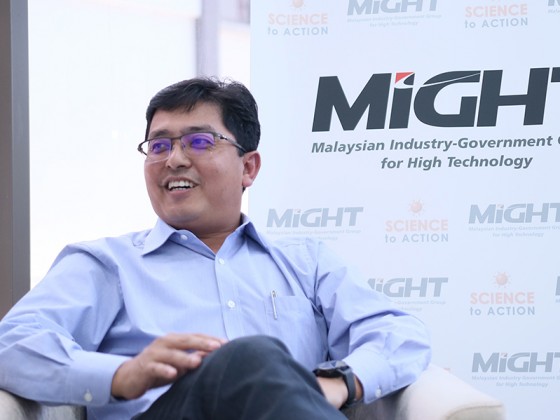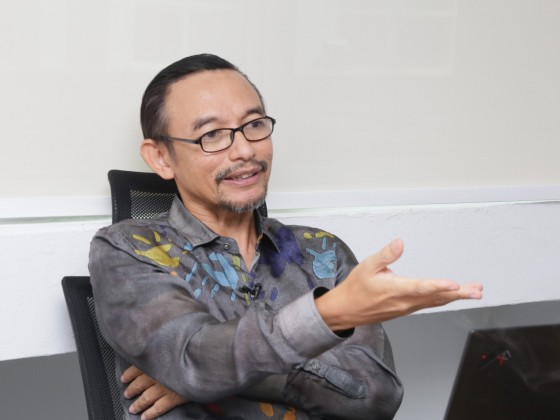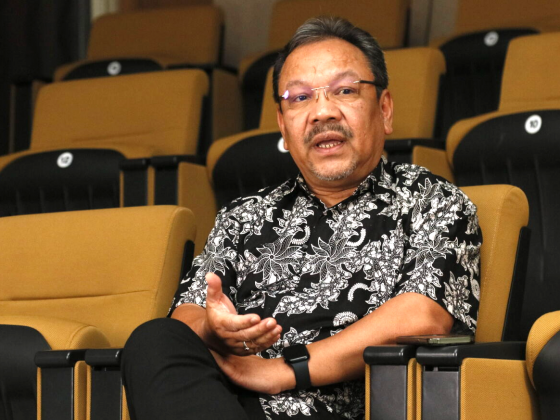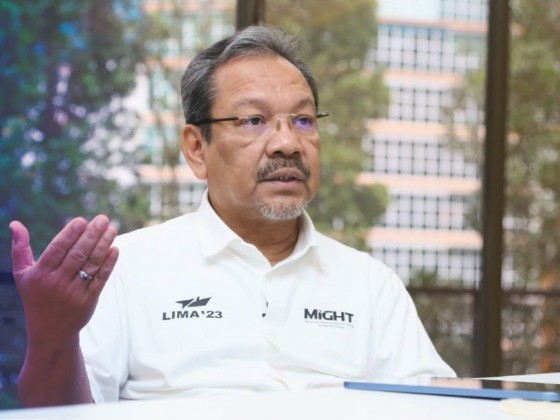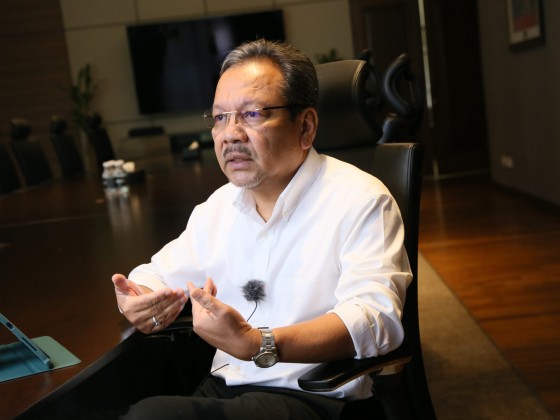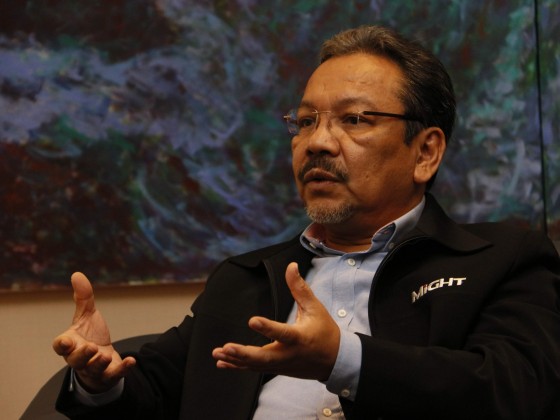An organisation’s culture can be changed over time with dedication and effort. However, it has to start with visible recognisable change in behaviour, primarily within the organisation’s leaders. For the change to be sustainable, with improved chances of success, it must address four key aspects – role modelling, communications, skill building and reinforcing mechanisms. Carried out well, it can result in a high-performance workplace.
A high-performance workplace is one that functions well, and has a motivated and productive workforce. They feel encouraged by their leader, are in line with the company’s principles, and have positive opinions of the corporate leadership. They also have access to the tools they need to reach and achieve their goals.
According to the Gartner Glossary, such workplace is ‘a physical or virtual environment designed to make workers as effective as possible in supporting business goals and providing value. A high-performance workplace results from continually balancing investment in people, process, physical environment and technology, to measurably enhance the ability of workers to learn, discover, innovate, team and lead, and to achieve efficiency and financial benefit.’
In short, a company with high-performance cultures is a great place to work in. This spirit is instilled in MIGHT and symbolised by the abbreviation S.U.A.V.E.
S.U.A.V.E and being MIGHTians
S.U.A.V.E. is a term that connotes insight, optimisation, versatility, intelligence, and innovation in the workplace and workforce, making it a futuristic term in corporate culture. S.U.A.V.E sets our standards for internal operations as well as our partnerships and services that we have with the stakeholders.
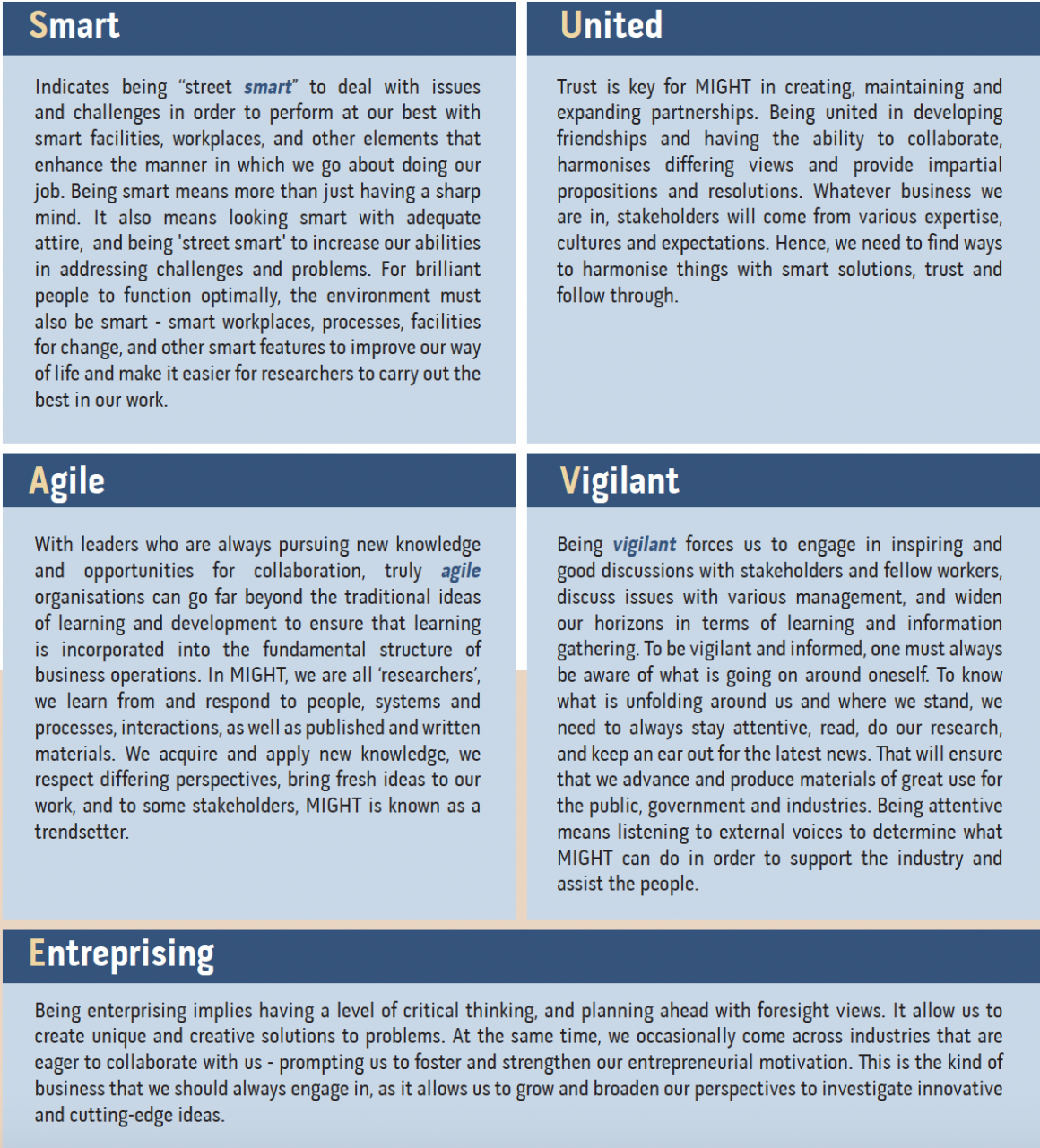
But, why a high-performance culture?
MIGHT is celebrating its 30th anniversary next year. With a high-performance mentality, we have up to now translated SUAVE into our works and produced success stories.
Since the early years, we have witnessed changes in trends and challenges in various aspects. We work closely with our stakeholders to respond to and provide solutions in the form of written reports, detailed planning documents, effective programmes, and engagements. There are many success stories that manifest MIGHT’s SUAVE spirit that is significant to the development of the Malaysian high technology industry landscape. For example, the conception of Formula One Malaysia was a MIGHT initiative, a means to advance national motorsports. MIGHT has also been instrumental in driving the development of the aerospace industry in Malaysia.
The past years have seen MIGHT’s involvement in smart cities agenda in Melaka, Perak and Johor. These collaborations are examples of manifestations of forward-looking strategic planning in supporting the environmental, social and governance (ESG) agenda and applying high technology as major part of the solutions as well as ensuring stakeholders commitment. On the international front, the Malaysia-Türkiye project, in which Malaysia and Türkiye collaborate to minimise our dependence on western technology, in particular with regards to defence, is an important project we will be carrying out. This is a good illustration of how two nations create trust and a sense of fraternity. We must realise that working alone is increasingly impossible and that collaboration is necessary for improvement.
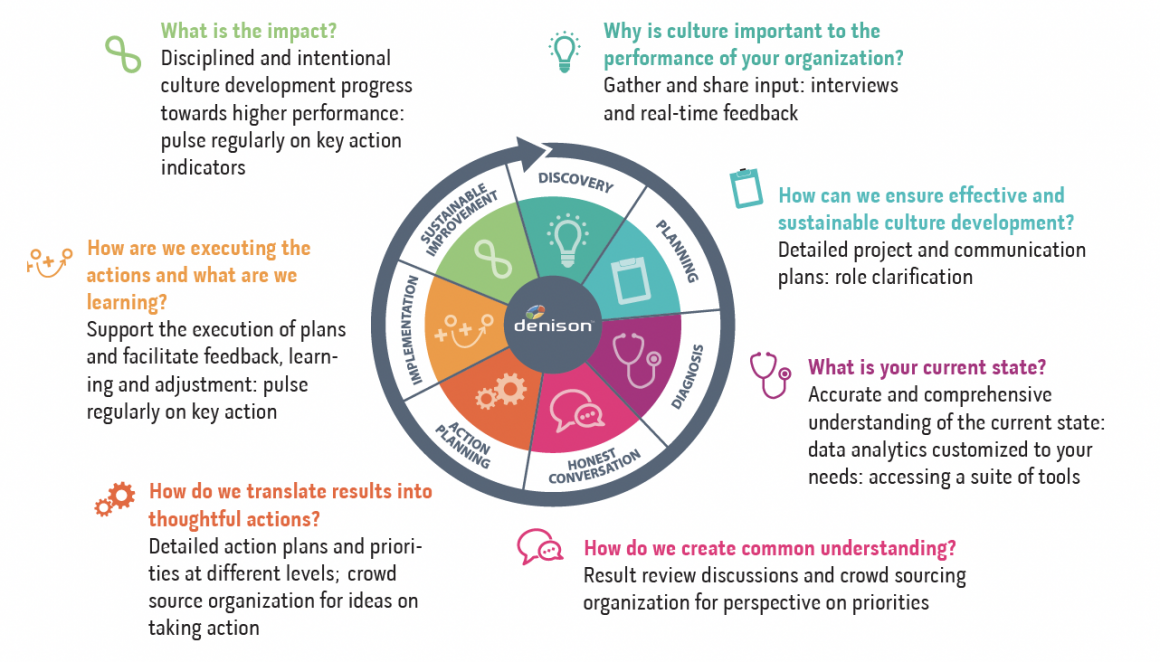
Conclusion
MIGHT as a government think tank, provides information that matters – by offering intelligent solutions, consulting and engaging with strategic stakeholders, understanding issues as well as challenges either realised or anticipated, exploring consequences of prescriptions, and providing focus as well as prioritisation of resources and enabling actions. It is a concerted effort in creating the desired future and establishing the true north – in support of the national vision, mission and aspirations, through policy interventions and creations.
The nation, industries, companies and individuals will all benefit from a high-performance culture – essentially through motivated and highly productive workers when they are encouraged, empowered, and engaged in their work. Building a high-performance culture may appear to be a challenging task, but it is by no means impossible. MIGHT Boleh!
REFERENCES
- https://www.gartner.com/en/information-technology/glossary/high-performance-workplace
- https://www.mckinsey.com/capabilities/operations/our-insights/creating-a-high-performance-culture
- https://www.gartner.com/en/information-technology/glossary/high-performance-workplace
- https://lattice.com/library/high-performance-culture-what-it-is-and-how-to-create-it


